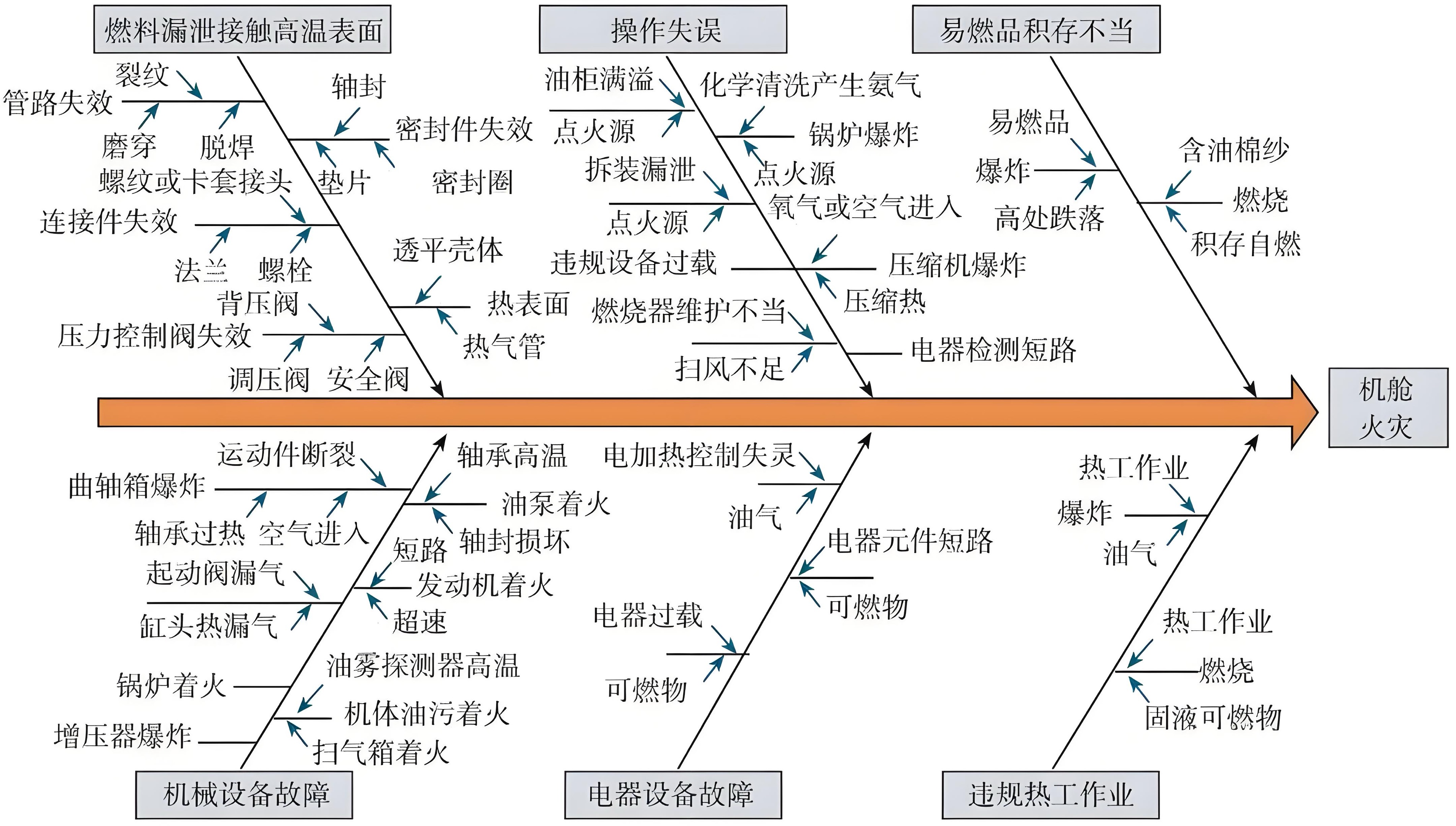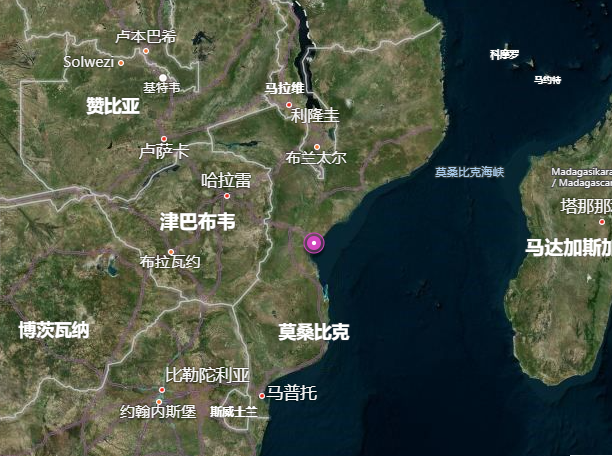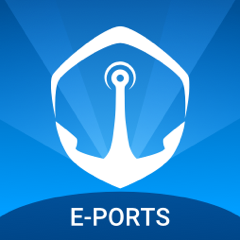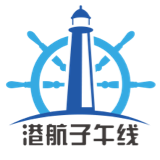Two Engine Room Fires in Two Weeks: What’s Happening in Mozambique Waters? 两周两起机舱火灾,莫桑比克海域最近怎么了?
Two Engine Room Fires in Two Weeks: What’s Happening in Mozambique Waters?
两周两起机舱火灾,莫桑比克海域最近怎么了?
As a key shipping hub in East Africa, Mozambique’s waters and ports have recently experienced a series of accidents. In mid to late April, two engine room fires broke out on vessels near Beira Port and in Nacala Avivah Port, highlighting challenges in engine room safety management and emergency response. Fortunately, neither incident resulted in any fatalities, but issues such as treating the injured and recovering the vessels remain unresolved. Here are the details:
作为非洲东部重要航运枢纽,莫桑比克海域及港口近期事故频发。4月中下旬,该国贝拉港外海及纳卡拉阿维拉港接连发生两起船舶机舱火灾事故,暴露出机舱安全管理和突发火情处置的共性挑战——前者涉及远洋航行中的油轮失控风险,后者则考验港口作业期间的应急响应效率。两起事件均未造成人员死亡,但伤员救治、船舶脱困等后续问题仍待解决。以下是具体情况:
On April 22, a tanker with a deadweight of 45,953 tons and a length of 182 meters was sailing in the Indian Ocean when an engine room fire suddenly broke out. At the time, the vessel was en route from Beira, Mozambique, to Fujairah, UAE. After a night of firefighting efforts by the crew, the fire was brought under control by the following morning. However, one crew member was burned during the firefighting process. A nearby Indian naval vessel promptly responded to provide medical assistance. The injured crew member did not require helicopter evacuation, but the shipowner is currently coordinating his transfer. Currently, the vessel, which suffered partial flooding of its engine room due to the fire, is adrift. The extent of damage to the ship and the subsequent plan of action (whether to tow the vessel or conduct repairs onboard) remain unclear, and authorities are continuously monitoring the situation.
4月22日,载重吨45,953吨、船长182米的油轮在印度洋航行期间突发机舱火灾。事发时,该轮正从莫桑比克贝拉港(Beira)驶往阿联酋富查伊拉港(Fujairah)。船员经过彻夜扑救,于次日清晨火势得到控制,但一名船员在灭火过程中被烧伤。附近印度海军舰艇迅速响应,提供医疗援助,伤员暂无需直升机帮助撤离,但船东正协调将其转移。目前,该轮因火灾导致机舱部分进水,处于漂流状态,船体受损程度及后续处置方案(拖航或自主维修)尚未明确,当局正持续监控现场。
On April 15, a coal-laden bulk carrier, bound for Poland, was docked at Nacala Avivah Port in Nampula Province, Mozambique, for ore loading operations when an engine room fire suddenly erupted. The accident resulted in four crew members sustaining minor injuries, with no fatalities reported. According to the Nacala Maritime Transport Regulatory Authority, the vessel encountered abnormal conditions shortly after arriving at the port. Preliminary investigations suggest that the fire may have been triggered by an explosion of unknown origin. Following the accident, the crew promptly activated the emergency response plan, successfully containing and extinguishing the fire onboard.
4月15日,一艘装载煤炭、计划驶往波兰的货轮在莫桑比克南普拉省纳卡拉阿维拉港停靠进行矿石装载作业期间突发机舱火灾。事故造成四名船员受轻伤,未出现人员死亡。据纳卡拉海事运输监管局披露,该货轮抵港后不久即发生异常情况。初步调查显示火灾可能由不明原因爆炸引发。事故发生后,船上人员迅速启动应急预案,成功控制火势并自行完成灭火作业。
During the emergency response, relevant departments urgently dispatched four tugs equipped with professional firefighting systems to the scene. It is worth noting that before the arrival of the rescue tugs, the crew had already effectively contained the fire through prompt actions, preventing its spread and avoiding greater losses. Currently, port operations have gradually resumed, and the specific cause of the accident is still under investigation.
在应急处置过程中,相关部门紧急调派四艘配备专业灭火系统的拖轮驰援。值得注意的是,在救援拖轮抵达现场前,船员已通过有效处置阻断了火势蔓延,避免了更大损失。目前港口运营已逐步恢复,事故具体原因仍在深入调查中。
Common Causes of Engine Room Fires
机舱火灾常见原因
According to WorldShipping, a research team has collected and analyzed cases of engine room fires on ships. By studying 100 actual cases of engine room fires from official sources, the team summarized the causes of such fires and other influencing factors, and explored preventive measures. The causes of engine room fires can be categorized into six types:
① Fuel leakage coming into contact with hot surfaces; ② Mechanical equipment failure; ③ Operational errors;④ Electrical equipment failure; ⑤ Violations of hot work regulations; ⑥ Improper storage of flammable materials.
据《世界海运》刊载,有研究团队收集、整理船舶机舱火灾案例,并对这些案例进行深入研究,总结了船舶机舱火灾事故原因及其他影响因素,并探讨船舶机舱火灾事故的预防措施。共研究了100起船舶机舱火灾实际事故案例,全部来源于官方公布的资料, 对这100起机舱火灾实际案例进行研究,可将机舱火灾发生的原因总结为6类:
①燃料漏泄接触高温表面;②机械设备故障;③操作失误;
④电器设备故障;⑤违规热工作业;⑥易燃品积存不当。

图源网络
Preventive Measures for Engine Room Fires on Ships
船舶机舱火灾预防措施
- Pay attention to fuel leakage issues and conduct thorough inspections during daily management.
- Promptly wrap and shield exposed hot surfaces, and strengthen the daily maintenance of mechanical equipment.
- Standardize daily maintenance and operational procedures to prevent engine room fires caused by mechanical equipment failures.
- Establish and implement fire prevention rules and regulations on board, and conduct regular fire safety inspections.
- 重视燃料漏泄问题,在日常管理中仔细排查
- 及时包扎和遮蔽裸露的高温表面,加强机械设备日常维护
- 规范日常维护管理操作,防止机械设备故障引起机舱火灾
- 建立和落实船舶防火规章制度,定期开展防火安全检查
In the past two weeks, two engine room fire accidents have occurred in Mozambique waters. As a vital maritime and land transportation hub in Southeast Africa, Mozambique, with its unique geographical features and strategic port layout, serves as a crucial node in the Indian Ocean shipping network.
两周内,莫桑比克海域发生两起机舱火灾事故,作为非洲东南部重要的海陆交通枢纽,莫桑比克凭借其独特的海域地理特征和战略港口布局,成为印度洋航运网络的关键节点。
Mozambique
莫桑比克
Mozambique is located in Southeast Africa, bordering South Africa and Eswatini to the south, Zimbabwe, Zambia, and Malawi to the west, Tanzania to the north, and the Indian Ocean to the east. It faces Madagascar across the Mozambique Channel and boasts a coastline of 2,630 kilometers. The country experiences a tropical savanna climate, with an average annual temperature of 20°C in the south and 26°C in the north. The warm and humid season lasts from October to March of the following year, while the cool and dry season runs from April to September.
位于非洲东南部。南邻南非、斯威士兰,西界津巴布韦、赞比亚、马拉维,北接坦桑尼亚,东濒印度洋,隔莫桑比克海峡与马达加斯加相望,海岸线长2630公里。属热带草原气候,年平均气温20℃(南部)、26℃(北部)。10月至次年3月为暖湿季,4月至9月为凉干季。

图源网络
Mozambique’s railways and ports primarily serve its inland neighboring countries. International freight was once a major source of foreign exchange.
Railways: With a total length of 4,029 kilometers, some railway lines have ceased operation due to aging or damage, leaving 3,372 kilometers in service. The railway network consists of three unconnected east-west systems. The Moatize-Nacala Railway Project, completed in 2014, spans 902 kilometers, connecting the Moatize coalfields in Tete Province. It traverses southern Malawi and Nampula Province in Mozambique, reaching Nacala Port with an annual coal transportation capacity of 18 million tons. Operations commenced in January 2016. In 2022, Mozambique’s railways transported approximately 2.462 million tons of goods, a year-on-year increase of 30%, and carried 5.5 million passengers, a year-on-year increase of 81%.
Water Transport: With 1,500 kilometers of inland waterways and over 2,600 kilometers of coastline, Mozambique is home to 15 ports, including Maputo, Beira, and Nacala. Maputo is the country’s largest port and one of Africa’s renowned modern ports. It has 25 berths, a maximum depth of 14.3 meters, and can accommodate vessels up to 120,000 tons. In 2023, its cargo throughput reached 31.2 million tons. The port is connected by railway to South Africa, Zimbabwe, and Eswatini. Beira Port, Mozambique’s second-largest port, features 12 berths with water depths of 8–10 meters and an annual cargo handling capacity of 5 million tons. It can receive vessels up to 50,000 tons and is linked by railway to Zimbabwe and Malawi. Nacala Port, the third-largest port in Mozambique, has six berths and an annual cargo handling capacity of 2.2 million tons. It is equipped with a dedicated coal berth and a railway line connecting it to the coal-producing regions of Tete Province.
莫铁路、港口主要为内陆邻国服务。国际货运曾是主要外汇来源之一。
铁路:总长4029公里,但部分线路由于老旧或损毁已经停运,仍在运营的线路长度3372公里。主要是由三条东西走向,互不连接的铁路系统组成。2014年建成的莫阿蒂泽-纳卡拉铁路项目长902公里,连接太特省莫阿蒂泽煤矿区,借道马拉维南部和莫桑比克尼亚萨省,直达楠普拉省纳卡拉港,年均可运1800万吨煤炭,于2016年1月开始运营。2022年,莫铁路净运输货物约2462吨,同比增长30%,运送旅客550万人次,同比增长81%。
水运:内河航线1500公里,海岸线2600多公里。有马普托、贝拉和纳卡拉等15个港口。其中马普托是莫最大港口,也是非洲著名的现代化港口之一,有25个码头,最大水深14.3米,可停靠12万吨级船只,2023年货运吞吐量为3120万吨,港内有铁路通向南非、津巴布韦和斯威士兰。贝拉港为莫第二大港,有12个码头,水深8-10米,年吞吐能力为500万吨,可容纳5万吨级货轮,港内铁路通往津巴布韦和马拉维。纳卡拉港为莫第三大港,有6个码头,年吞吐能力220万吨,建有专门煤码头并有铁路通往太特省煤炭产区。
Beira Port – Mozambique’s Second-Largest Port
贝拉港——莫桑比克的第二大港
Beira Port, a core port in central Mozambique, was established in 1891. It serves as a major transshipment hub for neighboring countries such as Zimbabwe, Zambia, and Malawi and is a significant center for energy and commodity transportation in Southeast Africa. As the only efficient outlet to the sea for inland countries like Zimbabwe, Zambia, and the Democratic Republic of the Congo, its strategic importance and economic value far exceed those of ordinary regional ports, making it Mozambique’s “lifeline for inland countries.”
贝拉港(Port of Beira)是莫桑比克中部核心港口,始建于1891年,是邻国津巴布韦、赞比亚及马拉维的主要转口港之一,也是非洲东南部重要的能源与大宗商品转运枢纽。作为津巴布韦、赞比亚、刚果(金)等内陆国家的唯一高效出海口,其战略地位与经济价值远超普通区域性港口,堪称莫桑比克的“内陆国家生命线”。
The port experiences a tropical savanna climate, with south or southwest winds prevailing in the morning and east or southeast winds in the afternoon. The average annual maximum temperature is approximately 31°C, and the average minimum temperature is around 16°C. The annual rainfall averages about 1,500 mm. It is a semi-diurnal port with mean high and low tides of approximately 6.4 meters and 0.7 meters, respectively.
该港属热带草原气候,上午盛行南或西南风,下午为东或东南风。年平均最高气温约31℃,最低气温约16℃。全年平均降雨量约1500mm。属半日潮港,平均潮高:高潮约6.4m,低潮约0.7m。
The port features 10 main berths with a total quay length of 1,670 meters and a maximum depth of 9.6 meters. It is equipped with various cranes, mobile cranes, container cranes, tugs, and roll-on/roll-off facilities. The maximum lifting capacity of the cranes is 30 tons, and that of the container cranes is 40 tons, with the most powerful tugs having a capacity of 2,300 kW. Additionally, there are two oil berths with a maximum drafts of approximately 9.4 meters, equipped with pipelines of 250–550 mm in diameter connecting directly to oil storage areas. The port also has 33,000 square meters of shed storage and can stockpile up to 200,000 tons of minerals in open yards, with railway lines directly accessible to all berths for loading and unloading.
港区主要码头泊位有10个,岸线长1670m,最大水深为9.6m。装卸设备有各种电吊、可移式吊、集装箱吊、拖船及滚装设施等,其中电吊最大起重能力为30吨,集装箱吊为40吨,拖船的功率最大为2300kW。另有油船泊位2个,最大允许吃水约9.4m,备有直径为250~550mm的输油管可直通油罐区。港区有货棚面积3.3万平方米,露天堆场可堆存矿石约20万吨,码头均有铁路线可直接装卸。
Loading and unloading efficiency: Coal loading at 700 tons per hour, oil unloading at 400 tons per hour, and bulk mineral loading at 350 tons per hour. The anchorage for large vessels has a depth of 13 meters. Major export goods include mica, aluminum, zinc, blister copper, tobacco, tea, corn, cotton, oilcloth, animal hides, sisal, and ivory. Import goods mainly consist of timber, fertilizers, machinery, cotton textiles, building materials, wheat, gasoline, and rails.
装卸效率:装煤每小时700吨,卸油每小时400吨,散矿每小时装350吨。大船锚地水深达13m。主要出口货物为云母、铝、锌、粗炼铜、烟草、茶叶、玉米、棉花、油布、兽皮、剑麻及象牙等,进口货物主要有木材、化肥、机械、棉纺织品、建筑材料、小麦、汽油及铁轨等。
Maritime Service Types
Beira Port offers a comprehensive range of maritime and logistics services, supporting its regional hub status:
- Core Services:
Pilotage and Towage: Mandatory services to ensure safe berthing of vessels.
Bunkering: Supply of fuel oil, diesel, and fresh water within the port.
Ship Repair: Basic repairs can be carried out within the port, while complex repairs rely on nearby facilities.
- Logistics Support:
Freight forwarding, cargo sorting, cold storage, and customs clearance services.
The “Beira Agricultural Growth Corridor” project promotes agricultural exports from the hinterland.
- Extended Services:
Ship supplies, crew transportation, oil boom provision, and pollutant reception.
An electronic cargo management system (planned) to enhance registration and tracking efficiency.
海事服务类型
贝拉港提供全方位的海事与物流服务,支撑其区域枢纽地位:
核心服务:
引航与拖带(Pilotage & Towage):强制服务,确保船舶安全靠泊。
燃油补给(Bunkering):港内提供燃油、柴油及淡水供应。
船舶维修:基础维修可在港内完成,复杂维修依赖邻近设施。
物流支持:
货运代理、货物分拣、冷藏仓储及海关清关服务。
通过“贝拉农业增长走廊”项目,推动腹地农业出口。
扩展服务:
船舶物料供应、船员接送、围油栏供应及污染物接收。
电子货物管理系统(规划中),提升登记与追踪效率。
The recent engine room fire incidents in Mozambique waters not only reveal common safety hazards in vessel propulsion systems but also reflect the critical role of this strategic waterway within the regional shipping network. As a core hub in Southeast Africa, Mozambique, supported by deep-water ports such as Beira and Nacala, connects the resource export channels of inland countries like Zimbabwe and Zambia. The port throughput and emergency management capabilities of Mozambique directly impact the stability of the Indian Ocean-Atlantic trade chain.
E-PORTS, as a global intelligent ship service management platform, provides comprehensive services for Beira Port. For more information on Beira Port’s policies, relevant regulations, and fee forecasts, please contact us:
WhatsApp/WeChat: 13816101982
Email: contact@e-ports.com
莫桑比克海域接连发生的机舱火灾事故,不仅揭示了船舶动力系统安全的共性隐患,也映射出这一战略航道在区域航运网络中的关键地位。作为非洲东南部核心枢纽,莫桑比克依托贝拉港、纳卡拉港等深水良港,串联起津巴布韦、赞比亚等内陆国家的资源出口通道,其港口吞吐能力与应急管理水平直接影响着印度洋-大西洋贸易链的稳定性。
E-PORTS作为全球智能船舶服务管理平台,为贝拉港提供全面服务,如需了解更多贝拉港详细港口相关政策及费用预测,可联系我们:
WhatsApp/WeChat:13816101982
Email:contact@e - ports.com








